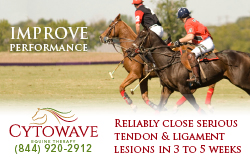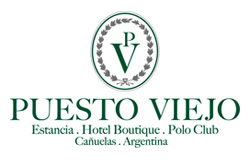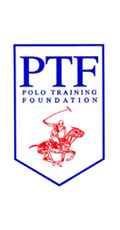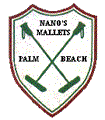Breeders look for the best formulas for creating top ponies..
Finding good polo horses can be a difficult task. Ask professional players and they will tell you they are constantly on the lookout for top ponies. When they spot one, there are often a dozen other players lined up to buy it, and usually the player with access to the deepest pocket will add it to his string. Because of the difficulties of finding good polo ponies, many players try to make their own. Often players will buy horses off the racetrack and try to convert them into polo ponies. Others breed their own. Either way, most admit, just one in 10 will make a top pony. Why? Because the sport of polo is like no other. Polo horses have to be more like triathletes. They’re required to run fast like a racehorse, but stop, pivot and start again like a cutting horse all the while keeping a cool head like a trail horse.
Breeding, raising and training polo ponies are no easy tasks. Being a good rider, or even a talented polo player, doesn’t mean you’ll be any good at breaking and then training young horses. Most players have to rely on others to do the breaking and initial training. And it will be at least four years before you’ll have a clue as to whether the horse will make it in the sport. During those four years, plenty of money will have been spent in a horse’s upkeep, regardless of its polo talent. When a prospect shows some promising polo talent, the player likely won’t want to part with it.
To help their odds, some players have taken a page from breeders of racehorses and begun concentrating on bloodlines from proven polo ponies when choosing the sire and dam. When someone has a top polo mare, she would be the obvious choice to use for breeding. The only problem is, the longer you wait to breed the mare, the harder it is to impregnate her and the more difficult it will be on the mare. Her best breeding years coincide with her best playing years. Even more, with a gestation period of 11 months, the number of foals a mare will deliver during those years is drastically limited. To solve these dilemmas polo breeders, particularly in Argentina, have begun using embryo transplants from their best mares. This way, fertilized eggs can be taken from a top mare and implanted in recipient, or surrogate, mares. This procedure allows a mare to have multiple offspring in just one year without being taken out of a playing string. [Thoroughbred racing associations only recognize live cover breeding as a measure to protect the integrity of the breed.]
We visited one such breeding farm, La Picaza in Open Door, outside Buenos Aires, Argentina. The operation is run by Carlos Reyes Terrabusi and former 7-goal professional player Miguel Bourdieu. The partnership is a combination of Bourdieu’s polo expertise along with Terrabusi’s breeding experience. The two are much more than business partners. In fact, Bourdieu is godfather to Terrabusi’s eldest son, who will be 8 this year. The two were introduced some 20 years ago by a mutual friend and began playing together. Bourdieu helped Terrabusi organize his polo, as he continues to do today, and play at a higher level.
“I left low-goal polo,” Terrabusi says. “Though not a medium- or high-goal player, I then began to play 20-goal polo and that was really a turning point for me. It is easier, faster and it is not so dangerous because when you play low-goal polo, there are some people that don’t know how to ride a horse. They don’t follow very well the rules. Since then I have tried to improve the quality of playing in my own life. I was a little bit annoyed to be playing at clubs and to have to maybe support certain players at the club … so when [I had] the opportunity [to buy] this place, I said, well, let’s try to build a little club for us, for amusing ourselves and playing along with friends.” The club generally plays at the 20-goal level, and its membership is by invitation only.
The land was purchased in July 1995 and the club began with two fields. Terrabusi enjoyed it so much he decided to enlarge the facility. “Little by little I was adding all the land I could afford so La Picaza is now around 185 hectares (about 463 acres), and now we have four polo fields—two normal Bermuda grass and two Tifton grass polo fields for very moist weather—and we really enjoy them.” Others do, too. One of the fields is said to be the best in Argentina and some of the Argentine Open teams are happy to accept invitations to use it for practice.
Terrabusi comes from a family of cattle breeders and eventually got involved with breeding horses. With plenty of space at La Picaza, Terrabusi decided to bring his horse breeding operation there in 2000, though it is operated separately from the polo club. At that time Bourdieu and Terrabusi decided to begin work with embryos, something Terrabusi had experience with in cattle breeding. Terrabusi says, “Right now we are very happy. We began slowly with 10 or 12 and this year we have about 54. We breed each year by buying embryos from some very good breeders and players. This is an excellent system and I strongly recommend it to anyone who wants to breed polo horses.”
Terrabusi’s idea for breeding polo ponies is to both have good horses to play and to sell. “We try by this process to have very good horses for us to play. But meanwhile, we had a surplus of horses so we said maybe we can sell some good horses.” The process begins with carefully choosing the sire and dam. Terrabusi says that what percentages come from the dam and sire “is an argument as old as the world. Half the people are going to tell you one thing, the other half exactly [the opposite]. I believe the mother is much more important than the father. If you have a mare that has played very good polo, [the offspring] is going to receive that ability. It is not that you are going to put them on a field and they are going to play, but they have the ability. There is something that is scientifically proven when, for example, you teach a mouse to eat at the sound of the bell, [the offspring] are more inclined to respond to the same stimuli. With horses I think it is something like that. Because from very good mares that played excellent polo, normally you can have very good horses that are going to play excellent polo also.”
La Picaza takes embryos from some of its own top mares and has three or four stallions, which they use for breeding only after they have played polo. Terrabusi says the ideal breeding years for a stallion are between 5 and 15 years old. “As with anything you have exceptions. If he is healthy you can use a 17- or 18-year old stallion, although the concentration of spermatozoid is not as great as that of a younger colt.”
Not all the colts born on the farm will be bred. Each year, only a few of the best prospects stay stallions, while the others are gelded. Terrabusi looks for stallions with good conformation, including strong, large bones and a lot of muscle along with a gentle mind, which usually come from excellent polo mares. Those that make the cut, literally, have to prove themselves on the polo field before they will be bred. One stallion at La Picaza is owned in partnership with 9-goaler Eduardo Heguy. The gentle, dark brown stallion is now 6 years old. He played this past season and was to be sent to the embryo center in the off season for breeding. For the most part, the stallions will only be bred for two years. Terrabusi says: “This is a matter of trial and error, trial and error. You really don’t have enough time to see the [finished] product. Not only if it is very good, but is [its conformation] correct, etc. Our animals are in very good health, but you must prove that they can play very good polo. That is why we are changing and trying not to get too close to only one stallion.” Remember, the stallion’s progeny will take years before it makes it to the polo field. If the stallion was bred repeatedly during those years, and the offspring don’t make good polo ponies, you could potentially have dozens of horses lacking any talent for the sport.
Even Terrabusi admits that although genetics is the most important part, it isn’t everything. “If you’ve got the genetics, you’ve got half of the work done.” The other half includes the training and care, veterinary and otherwise, the horse receives. La Picaza works with top veterinarians who monitor the mares and foals closely, and it even has its own equine nursery/hospital for any complications that may arise. La Picaza leases recipient mares that are implanted with an embryo and then brought to the farm for the remainder of the pregnancy and until the foals are weaned at about 6 months old. Only recipient mares that have already had a few foals, have body types that are conducive to delivering foals and are proven good mothers are used. The recipient mares are often ugly ducklings compared to the type-Y, beautiful babies they carry.
Instead of the rough breaking methods used in Argentina in years past, La Picaza employs a kinder, gentler method. “We are very careful, really,” Terrabusi says. “We begin in the first 12 hours of life, hugging them so they completely lose the fear of humans. Baby horses tend to identify the mothers with the person taking care of them. Because horses are shy and very frightful of everything due to their nature, if you can [eliminate] that fear, you have half the breaking in your pocket.” La Picaza has been using this method of breaking since well before its work with embryos began.
The hugging, or imprinting as it is called in the United States, seems to work. We walked out to a large grass field holding about 40 yearling fillies. As we approached the herd, they surrounded and greeted us. Both Terrabusi and Bourdieu, who are familiar to them, got the most attention and as we talked, they easily ran their hands over the fillies and could even run their fingers through their tales. What struck me the most was how much these horses look like miniature polo ponies. Even though they are only yearlings, they were neatly groomed with even their manes clipped. Bourdieu explained the horses are brought in and handled every day. And despite the large number of horses on the farm, there are relatively few handlers. Bourdieu says, “We prefer to have a small number of people handling them so we know it is done correctly.” Bourdieu oversees the day-to- “This is a really good system because it prevents a lot of injuries that used to happen during the breaking period,” Terrabusi says. “Years ago out of 10 horses that were broken, two or three were [seriously injured] so badly they were useless. Out of the others, only three or four were used for playing. Now, absolutely none get injured. Seven are going to reach a very good level of playing and the other three are going to play [at some level]. … Half of these horses are going to play more than 30-goal polo.”
Using only embryos with good genetics increases the chances of success, according to Terrabusi: “When you are breeding a horse you’ve got a lot of costs involved. It is the same [cost] to breed an excellent horse as one that is more or less. It needs veterinary care, vaccinations, the care of grooms and to be supported, so why not make the effort in producing excellent animals? I am a cattleman and believe, firmly, in genetics.”
Though Terrabusi leaves the day-to-day operations to Bourdieu, he does supervise the operation and makes an effort to learn as much as he can about the different parts of the process. “It is like making a good food or cocktail. You need very good raw materials and then fix it properly. If not, you are going to mess everything up.” One of the most talked about polo mares is La Luna, one of Gonzalo Pieres’ all-time best mares. Many of her offspring have gone on to be good polo ponies, and young horses with her bloodline are selling for large amounts of money. Terrabusi says: “The breeders [in Argentina] used to mingle purebreds with thoroughbred stallions, but that has proven not very good because they have [a lot] of speed but are not very tough in the bones and they are nervous. [In the past 10 years] fewer breeders have been using thoroughbred stallions. Sometimes you will have one, but it isn’t the norm anymore. That is why you can see, as happened [last November] one 2-year-old stallion with excellent blood from his mother and father [was sold for] $165,000. I think he was a grandson of La Luna.”
Ideally, La Picaza likes to have horses that aren’t too big but that can easily handle the stress and strains of the sport— ones that can be played with a 51 or 52 mallet, and stretch out when they run so they are very close to the ground. Terrabusi says: “This is physics. A horse that is a bit shorter, he turns easier. He can turn closer and at more speed [than a bigger horse]. If you like the shape of a polo horse, which are different than jumping or racing horses, you will find animals that are very beautiful and are very able when you see them play.” Despite the lack of thoroughbred blood, Terrabusi insists that with good bloodlines, polo horses have an enormous sprint and very good speed for polo.”
Because La Picaza has good relationships with many of the top Argentine players and they don’t compete against them, the players are more likely to sell the embryos from some of their top horses. So far, they have embryos from players like Gonzalo Pieres, Mariano Aguerre, Nachi Heguy, Marcos Heguy and Alfonso Pieres. They also have partnerships in some horses with other players. As testament to their success, La Picaza sold one mare that played for two years in the Argentine Open.
“It is very difficult to put a horse to play that quality of polo,” Terrabusi says. “It is easier to put a horse that is going to play 25 to 30 goals. But to play for more than 30- goals and not lose their temper, their easiness of playing is difficult. Still, next year I expect to have two playing [in the Open].
Embryo center imports Argentine expertise he New Bridge Embryo Center opens in Aiken, South Carolina, in April to bring stateof- the-art technology to breeding polo horses in the United States. “Of the 20 top polo players in the country, many are here in Aiken,” said Matias Magrini, who launched the embryo transfer center with the help of expertise from two of Argentina’s leading veterinarians in the field, including Dr. Luis Losinno, one of the pioneers of embryo transfer in Argentina, and Dr. Cristian Sporleder, the New Bridge resident veterinarian who also works with La Irenita Embriones in Argentina, the world-renowned breeding operation of Jorge MacDonough. “It made sense to open this facility in Aiken,” said Magrini. “Rather than waiting until mares have finished playing and losing years of access to that gene pool, it enables players to take embryos from their mares during their down time in Aiken and have a higher success rate in breeding horses for the future.” Argentina, home to polo’s highest-level tournament, the Argentine Open, has been practicing embryo transfers among top-level polo ponies since 1986 and with impressive results. “Approximately 50 percent of the ponies that play in the Argentine Open are from embryo transfers,” said Magrini. “Now you see on the field, daughters, mothers and grandmothers from the same line.” Julie Boyle is a managing partner in the New Bridge Embryo Center. After many years’ experience of breeding polo horses the traditional way at C Spear Ranch, she welcomed the opportunity to get involved in the new center, which she believes will be a great asset to polo breeders in the United States. “When they first started embryo transfers in Argentina, people were skeptical,” she said. “But it has evolved into something that makes so much sense. Now instead of taking a mare out of polo to breed you can possibly get four or five embryos from one mare during the spring. How exciting is that? After always handling my stallions when breeding the mares, the other aspect I like about embryo transfer is that this dangerous part of the breeding process is not necessary. The mares will all be inseminated by straws of collected semen.” New Bridge could have up to seven of its own stallions available to clients. Adolfo Cambiaso is sending two from Argentina to be part of the program. “It is appealing for the Argentine breeders to get involved with breeding U.S. polo horses and so be able to expand the gene pool in Argentina,” said Boyle. “The horses that are bred through the New Bridge Embryo Transfer Center may be eligible to be registered with the Argentine Association of Breeders of the Polo Horse and we will also plan to work with the new American Polo Horse Registry to make it possible for them to be listed there also.” This September the USPA Gold Cup Polo Championship returns to New Bridge and to coincide with the 26-goal tournament, the New Bridge Embryo Center has an event in mind that should interest American polo-horse breeders. “A highly successful embryo sale was held in Argentina recently,” said Boyle. “And we are hoping to have a similar event at New Bridge during the Gold Cup. It will be an interesting addition to the events surrounding the Gold Cup and will also be a great opportunity for aspiring breeders to get involved in the embryo program.” |








